Many non-profit organizations have been using FileSender to exchange large files for years to their satisfaction. But how did FileSender originate and which organizations and people are responsible for the success of this application? Jan Meijer has been involved with FileSender as a board member from the beginning and shares his knowledge and experiences in this interview.
“I was at a European meeting on storage in 2007, and during a presentation by the Finnish participants it became clear that there was a need for a service that would allow files to be exchanged between them,” says Jan Meijer, a member of the board of FileSender and in daily life working as Senior Advisor International Strategy at Uninett. “It was about files that were too large to send via e-mail. The plan was to develop an application for this purpose and then share it, but in practice that turned out to be difficult to realize.”
The issue arose again the subsequent year. It turned out that four solutions had been devised in the meantime. Commissioned by Jan Meijer, a number of Norwegian summerschool students had set to work to develop a prototype. In the course of the development process they encountered a number of practical problems. In Ireland and Switzerland they had also come up with a solution. The Swiss solution involving file encryption turned out to be the best solution. “We asked the Swiss if their solution could also be shared with others. This proved to be difficult, because the software was owned by the University of Basel, which did not give permission for this.”
Sharing through open source
“After that, I started talking to Guido Aben, who was operating in Australia. He appeared to be experiencing the same problems with sending large files. We were fortunate to have a developer available in his organization. We started a joint project together with people from Norway, Australia and Ireland to develop a painless and secure solution that made sharing arbitrarily large files with a private audience through a trusted intermediar possible. Uninett fulfilled a coordinating role and shortly SURF joined us. Each participant donated €20,000 to a joint fund, which enabled the whole thing to be set in motion. That happened in April 2009. We made several fundamental choices for development and design as well. These included making the application available as open source software so that lots of people would be able to use it. Anyone who wants to use it can download FileSender including documentation for free on GitHub.”
Small core team
FileSender currently has a board comprised of three people. “Our core team is quite small at the moment. We are still looking for someone to keep up with the documentation. Previously, we also had someone dedicated to manually testing FileSender, but we have completely automated that in recent years.”, clarifies Jan Meijer. The board operates both strategically and operationally. They have discussions about specific technical choices they have to make and in addition they are involved in generating income through funding, which makes it possible to hire a developer, for example.
The FileSender developer works from Australia and is engaged in maintenance, development and realization of integrations of contributions from the community. Occasionally FileSender receives spontaneous development contributions that the developer then integrates. At times, the developer may need to do some tweaking to the code. FileSender also receives support in the form of annual audits that SURF performs for them.
Used worldwide
In 2021 FileSender will be in use worldwide. In addition to non-profit organizations such as the National Institute for Public Health and the Environment (RIVM), large law firms and commercial research laboratories are also using FileSender. As a result of all the reporting about data breaches, society has become aware of the importance of safe data transmission between organizations. As a result, FileSender is experiencing a growth in the number of users who do not want to run the risk of data leaks. In Europe, thirteen national research networks are working with FileSender. Unfortunately, Germany and Great Britain are missing from this list. Furthermore, FileSender is in use in places like Russia, Turkey, Africa and Latin America.
Are you interested in using FileSender for your own organization? You can download the software and accompanying documentation for free at GitHub: https://github.com/filesender/filesender/ or do you want to read more about our future plans first? Check out: What are the technologies used in FileSender?


